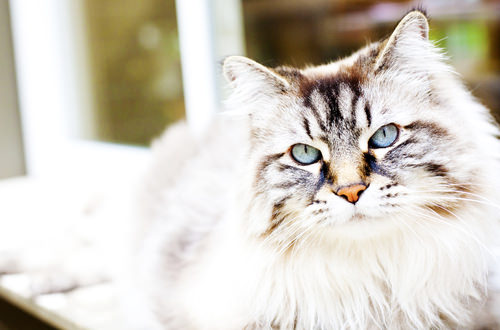
Is your cat shedding more than usual? Cats shed and groom themselves regularly, but sometimes they seem to really be letting go of their hair. There are a number of reasons that you need to know.
Parasites, like fleas , are a very common cause of hair loss for cats. Fleas have very irritating saliva and their bites cause intense itching. Many cats develop an allergy to the bites which makes the itching even worse. The cat will then scratch, rub or bite the area until the hair is gone and sometimes so is the top layer of skin! Make sure even indoor cats are on a veterinary approved flea product all the time. Most of the flea life cycle is not on the host, so you will not see evidence of fleas unless the infestation is severe, but flea allergies can certainly be a cause for an increase in shedding. Certain skin mites can contribute to shedding too and most of the best flea treatments get them too.
Inhalant allergy (atopy) is another cause of excessive shedding and hair loss. Atopic cats can be allergic to pollen, molds and dust and the allergy causes skin itching. The itching will lead to hair loss because the cat will groom more and secondary infection makes it all worse. Allergies are not a curable condition, but your veterinary team can help manage the symptoms. You might suspect that you have an allergic cat, but atopy is an actual medical diagnosis that needs to be treated by a veterinarian, so do not try to manage this at home.
Metabolic disease (disorders of your cat’s hormone and metabolic systems) can also cause hair loss. The term “endocrine disease” encompasses some big issues, like kidney disease and hyperthyroidism. These disorders must be uncovered as soon as possible to allow for the best long term outcome. This type of shedding and hair loss tends to be non-inflammatory, i.e. the skin looks fairly normal, but the hair appears to have just fallen out or you notice undue shedding. Your vet can run tests to check for these critical and all too common feline issues.
Normal Seasonal Shedding
Cats do normally shed their coats. Cat owners know that there is always hair to pick up, but normal feline shedding will not typically leave bald patches. If you notice an increase in the amount of hair you are cleaning up, inspect your cat closely and be sure to tell your vet. Your sensitivity to what is normal (or not) for your cat could be a “game changer”in getting her help before it is too late.
Sometimes increased shedding is the first subtle sign of more serious disease. If you think your cat is shedding excessively, you are probably right and you need to call your vet.
Do you love cats? So do I! Find me on Facebook!

